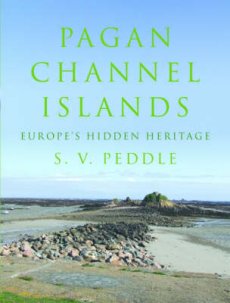Home > All Titles > Adult Non-Fiction > Body & Spirit & Self Help > Pagan Channel Islands: Europe’s Hidden Heritage *Limited Availability*

Around three to five thousand years ago, an ancient people began building stone sites and monuments on the Channel Islands, creating a landscape as rich in mythology as any archaeological site in Greece or Egypt. Since early Christian times, the dolmens (stone chambers) and menhirs (single standing stones) have been reviled as the domain of witches, ghosts, and dragons. They were thought to bring bad luck and sudden death to all who came near. Yet, they have also been cherished as sources of healing, female fertility, good harvests and buried treasure, as well as the dwelling place of friendly fairies. Despite the fact that these structures were seen as a threat by the Christian Church, which was determined to erase the Paganism of the past, a good number of them remain. The superstitions surrounding the dolmens and menhirs, in particular the dire consequences said to ensue following their destruction, have preserved many of them to this day. The authors recount the terrible fates which have befallen several Channel Islanders who have dared to disturb or destroy these ancient sites. Channel Island mythology is alive and well today, and surviving in local superstition, customs, poetry, art and folklore. The “Pagan Channel Islands” uncovers and explores this mythology, and relates it to the ancient wisdom of the stones. It demonstrates that, with a little imagination and respect for our environment, we can bring the near-forgotten monsters, fairies and ghosts of our legendary past to life.